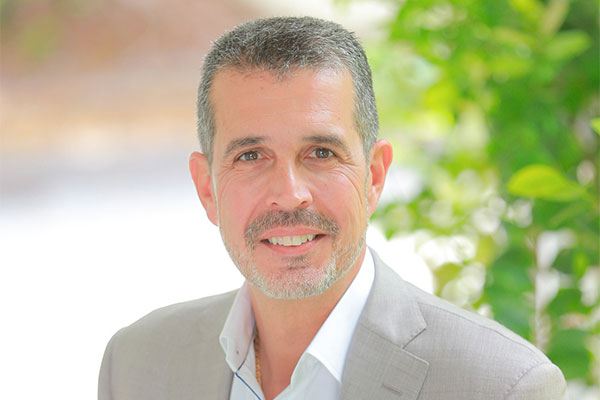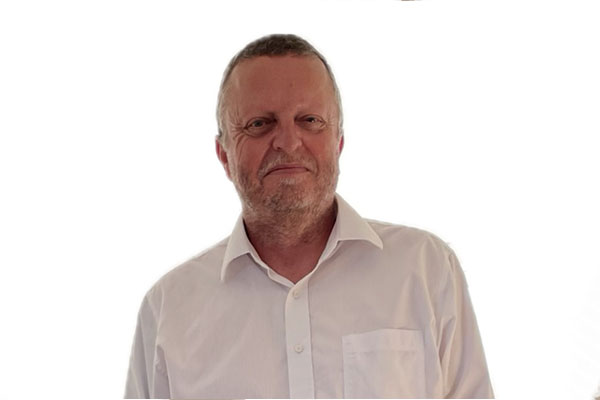What is middleware software, you may ask? Not knowing—or caring, for that matter—wouldn’t be a sin; no, middleware software isn’t seductive technology, but if a hotel is going to operate effectively, it’s a piece that is as necessary as a comfy bed or strong water pressure.
Think of middleware software like a bridge. What does a bridge do? It connects things together, allowing seamless movement and flow from one place to another. The hotel industry is a people’s business; it’s also a business that needs technology tools to run. These tools include the property management system, point of sale, phone system, mobile apps—middleware, then, plays a crucial role by ensuring that data moves quickly, securely and consistently between these systems.
One of the biggest reasons middleware is so essential is the sheer number of systems hotels rely on. Consider that a single hotel can use more than 20 different software applications and the industry as a whole features more than 500 software tools across some 30 categories. That’s a lot of balls to juggle.
Middleware software can be thought of as a glue that binds them, or, as John Owen, the one-time CEO of TigerTMS, refers to it: “software oil [that] lubricates the system without adhesion to any of the component parts.”
No matter how one defines it, there are a smattering of companies that are earnest in this business of joinery. HOTELS puts the spotlight on five that are taking middleware to the top.
Hapi
HQ: Miami
Find them @: hapicloud.io
Think about this: Hotel companies can spend more than 20% of their development budgets tackling integration work that is not strategic to the project being delivered. That’s according to Luis Segredo, the CEO and co-founder of Hapi, which just so happens to be in the business of integration by bridging the gap with real-time data streaming and an open, cloud-native architecture. Its platform connects property-level systems with enterprise tools, regardless of vendor or location, which “allows hotel companies to innovate faster,” Segredo said, adding that Hapi helps hotels move from fragmented data to a consistent and unified view of their operations. For example, as Segredo pointed out, if a hotel wants to send a F&B voucher to a loyalty member through its mobile app, it requires communication between the PMS, loyalty database and the app itself. “Hapi powers this connectivity with a real-time data stream that ensures immediate access to the relevant data so hotels can deliver the voucher at the right time, creating high-touch personalized guest experiences at scale,” he said. And watch out for AI and its impact—it’s coming. “Current AI tools are largely focused on interpreting or summarizing information, but in the future, AI tools will be expected to perform tasks such as retrieving and sending invoices, checking guests in or out, or posting charges,” Segredo said. “As hotels adopt more AI-powered tools, middleware will become the critical enabler that connects those tools to the operational systems needed to run the business.”

Ireckonu
HQ: Amsterdam
Find them @: ireckonu.com
There’s a Dutch proverb that goes: “Wie goed doet, goed ontmoet.” Translation: “Who does good, meets well.” The saying means that if someone performs good deeds, they can expect good things to happen to them in return. It’s a practical way to help explain the now 11-year journey of Ireckonu. CitizenM is one of the pioneers in tech-forward boutique hostelry, but back in 2014 it faced tech-stack challenges. Its search for inventive solutions to improve the guest experience led them to a former software engineer at Microsoft and founder of Ireckonu, Jan Jaap van Roon. CitizenM’s successful integration with Ireckonu led to future deals with the likes of Mandarin Oriental Hotel Group and Loews Hotels—good things coming in return for good work done. van Roon deftly frames the importance middleware, especially for an industry that historically has been slow to adapt to new technology and which is known to operate myriad property-level systems. “Without [it], you don’t know what’s going wrong, and there are no insights,” he said. “Only with middleware can you manage so many connections. Without it, data gets fragmented, operations slow down and the guest experience suffers.” AI, according to van Roon, should elevate the guest experience even more and make operations that more seamless and smart. “AI is absolutely a part of that and middleware will play a big role in supporting it,” he said.

TigerTMS
HQ: Hampshire, England
Find them @: tigertms.com
TigerTMS’s origins date back to the early 1980s, all the way back to call accounting, which in hotels meant tracking records and analyzing guest phone usage for billing purposes. How things have changed. Today, TigerTMS’ focus has shifted given the broad scope of PMSs and hotel systems transitioning from a traditional PMS-centric architecture to a more flexible, distributed middleware model. TigerTMS accomplishes this through its iLink Middleware system, now deployed at some 10,000 hotels. “Hoteliers strive to deliver seamless and personalized guest experiences, from uninterrupted Wi-Fi to secure room access,” said Adrian Seymour, managing director of TigerTMS. “These services require integration with the PMS, leading to a growing number of system connections. This is where middleware becomes essential.” Seymour refers to middleware as the “invisible enabler” that ensures operations run smoothly, revenue increases and guest experiences improve. The traditional set up of a PMS requires every application to have its own connectivity, each incurring its own license fee. Adding new technology means developing new interfaces, which not only increases costs but also leads to long development timelines and integration delays. TigerTMS, like its peers, addresses this challenge through a distributed middleware architecture that enables hotels to gain the freedom to choose solutions tailored to their needs, without being limited by costly interface requirements. “There is no need for multiple interface licenses—one connection will suffice,” said Seymour. “The PMS remains the core operational hub, while still maintaining connectivity with all other systems—efficiently and flexibly.”

Axing
HQ: Ramsen, Switzerland
Find them @: axing.com
Ünal Isler, who heads up business development and new technologies for Swiss company Axing, is well aware that he works in a business segment that doesn’t gain too much attention, but whose technology plays a crucial role in running a successful, optimized hotel. “Middleware solutions are not as publicized or talked about in the context of the hotel tech stack,” he said. “It doesn’t grab headlines.” That may be, but it’s the “silent enabler” or “invisible conductor” he calls it, powering a seamless hotel technology experience, where things like the TV, broadband, the PMS and other guest services need to work in harmony. Consider Axing’s IPTV middleware, which links the headend hardware with smart TVs, IPTV tuners and the hotel’s PMS system, “creating one smooth, connected experience,” Isler said. “That means guests can enjoy custom welcome screens, easily navigate channels, order room service from the TV or check out without calling the front desk—all from one intuitive interface.” Like most, he has a future in mind for middleware that leans on intelligent automation, real-time personalization and deep system integration and, “Yes, he said, AI will play a central role.” Middleware platforms are already laying the groundwork by connecting PMS systems, smart TVs, streaming tools and guest services into a unified network, he said. “The next step is using AI to analyze guest behavior and automate decision-making where, for instance, middleware can proactively adjust room environments based on preferences, recommend content or even suggest hotel services based on previous stays.

DerbySoft
HQ: Dallas
Find them @: derbysoft.com
DerbySoft isn’t categorically traditional middleware, but it is certainly a type of middleware, according to Divisional CEO Duane Overgaard. Its software offers connectivity services through a single connection to travel distributors. Consider its Property Connector, which enables hotels to connect to more than 500 channels and manage rates, availability and inventory on one platform through the PMS. “[Our] solutions focus on driving sales opportunities and helping hotels reach a broader global marketplace,” Overgaard said, through online travel agencies or direct bookings. At its core, DerbySoft puts property rates, availability and inventory where travelers are shopping. You could say it was put on the map several years ago when a large global chain came to it with a connectivity challenge related to a global OTA. “We successfully solved this challenge for them, and the result was our industry-leading cache,” Overgaard said. Though DerbySoft is assuredly a technology company, Overgaard counts listening as its best service. “This is what DerbySoft does best,” he said. “Often, a hotel chain or distributor will come to us with a problem and it is not quite sure what solution they’re looking for. We dig into the challenges and listen to understand the gaps that they’re trying to solve. At the end of the day, we’re problem solvers.” It’s also into AI, working on an initiative to take free-form descriptive text and format it into useful data elements, allowing details about a specific room, such as bedding, amenities, view, to be displayed alongside the room listing, helping properties differentiate their offerings. While this may seem like a given, the antiquated technology systems that many travel companies use today are simply unable to accommodate this type of detail,” Overgaard said.







